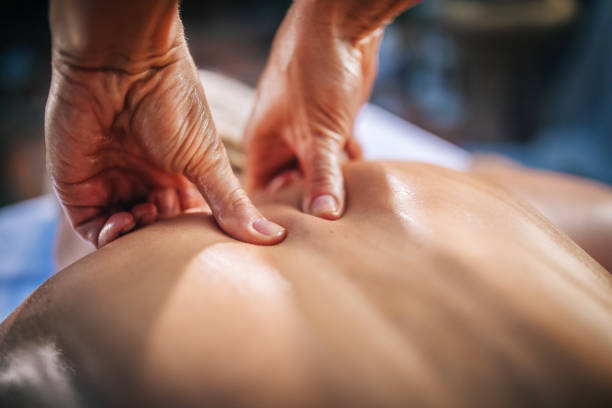
What Is the Key to Reducing Injury and Improving Flexibility for Aurora's Active Community?
Posted by on 2024-02-21
The quest for optimal physical well-being, particularly among the vibrant and dynamic populace of Aurora, hinges upon a multifaceted approach. To mitigate injury risks and augment flexibility, one must embrace a regimen that meticulously incorporates both preventive measures and consistent enhancement techniques.
Foremost in this pursuit is the adoption of regular stretching exercises. Stretching not only promotes muscular elasticity but also invigorates blood flow to the tissues, thereby diminishing the likelihood of strains and sprains. It is pivotal for individuals to integrate stretches both prior to engaging in vigorous activities and as a cooldown routine post-exercise.
Strength training is another critical element in safeguarding against injuries. By fortifying the muscles surrounding key joints, one can ensure better support and reduce undue stress on ligaments and tendons. This does not necessitate heavy lifting or intense bodybuilding; rather, focused exercises using appropriate weights that target stability can prove highly beneficial.
Furthermore, active individuals should pay heed to proper technique during all physical endeavors. Misalignment or incorrect movement patterns can precipitate acute injuries or contribute to chronic issues over time. Instruction from certified trainers or physical therapists can aid in rectifying these flaws, thereby enhancing overall performance while simultaneously curtailing injury risks.
A crucial yet often overlooked factor is rest. Adequate rest intervals permit the body's natural repair processes to transpire effectively. Overexertion without sufficient recovery time can lead to overuse injuries—thus it is imperative for active individuals to listen attentively to their bodies' signals and allot downtime when necessary.
In addition, staying hydrated and maintaining a nutritious diet play supportive roles in injury prevention and flexibility improvement. Hydration ensures that tissues remain supple, while nutrients from a balanced diet fuel the reparative functions essential for musculoskeletal health.
Lastly, addressing any biomechanical imbalances with corrective exercises or orthotic interventions may be necessary for some individuals. For instance, those with flat feet might require arch supports to prevent undue strain on lower extremity joints during activity.
In conclusion, reducing injury incidences and fostering increased flexibility within Aurora's bustling community requires an integrated strategy encompassing stretching routines; strength conditioning; proper technique adherence; judicious rest periods; hydration coupled with nutrition optimization; as well as tailored corrections for biomechanical discrepancies if needed. Through this comprehensive approach lies the path toward sustainable physical vitality and resilience against injuries amidst an actively engaged lifestyle.
Foremost in this pursuit is the adoption of regular stretching exercises. Stretching not only promotes muscular elasticity but also invigorates blood flow to the tissues, thereby diminishing the likelihood of strains and sprains. It is pivotal for individuals to integrate stretches both prior to engaging in vigorous activities and as a cooldown routine post-exercise.
Strength training is another critical element in safeguarding against injuries. By fortifying the muscles surrounding key joints, one can ensure better support and reduce undue stress on ligaments and tendons. This does not necessitate heavy lifting or intense bodybuilding; rather, focused exercises using appropriate weights that target stability can prove highly beneficial.
Furthermore, active individuals should pay heed to proper technique during all physical endeavors. Misalignment or incorrect movement patterns can precipitate acute injuries or contribute to chronic issues over time. Instruction from certified trainers or physical therapists can aid in rectifying these flaws, thereby enhancing overall performance while simultaneously curtailing injury risks.
A crucial yet often overlooked factor is rest. Adequate rest intervals permit the body's natural repair processes to transpire effectively. Overexertion without sufficient recovery time can lead to overuse injuries—thus it is imperative for active individuals to listen attentively to their bodies' signals and allot downtime when necessary.
In addition, staying hydrated and maintaining a nutritious diet play supportive roles in injury prevention and flexibility improvement. Hydration ensures that tissues remain supple, while nutrients from a balanced diet fuel the reparative functions essential for musculoskeletal health.
Lastly, addressing any biomechanical imbalances with corrective exercises or orthotic interventions may be necessary for some individuals. For instance, those with flat feet might require arch supports to prevent undue strain on lower extremity joints during activity.
In conclusion, reducing injury incidences and fostering increased flexibility within Aurora's bustling community requires an integrated strategy encompassing stretching routines; strength conditioning; proper technique adherence; judicious rest periods; hydration coupled with nutrition optimization; as well as tailored corrections for biomechanical discrepancies if needed. Through this comprehensive approach lies the path toward sustainable physical vitality and resilience against injuries amidst an actively engaged lifestyle.